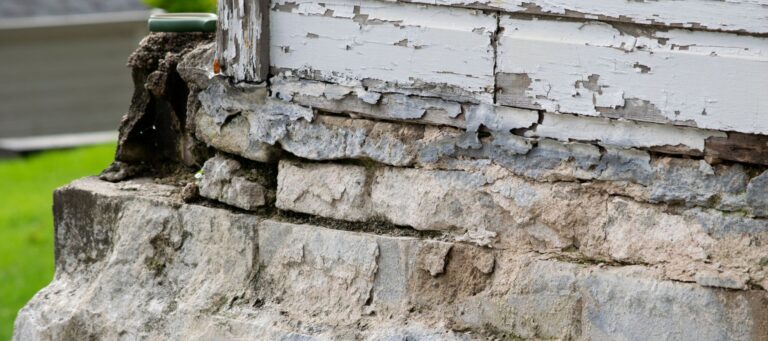Foundation Settling Vs. Foundation Problems: How To Tell The Difference
A home is the most valuable asset most people own. As such, no one wishes to lose his or her home comfort due to structural problems. The house must maintain the highest structural integrity, and when compromised, you need to know the exact action that will avert the problem.
The structural uprightness of your home lies squarely on the foundation. The foundation of a house is usually made of concrete that is poured on steel. With time, the concrete may start to crack due to settling. All buildings, once constructed tend to settle at some point due to the gravity that exerts pressure on the house foundation. Once this happens, you could have foundation settling or foundational problems. This is why we will set out to explain to you the difference between foundational settling and foundational problems.
What is Foundational Settling?
The term “settling” in buildings refers to the gradual and natural changes that occur in the foundation. These changes could be a result of the weather or time. House settling analysis needs to be done by contractors by giving a close look at the soil type where a building is being put up. Once the soil analysis is done, an estimate of the time a building can take before it completely settles.
A new home may naturally sink into the ground after some duration. If there happens to be inappropriate soil preparation, new homes may be at risk of sinking. We will advise you to avoid constructing your house during extreme weather conditions, such as a heavy downpour or during a drought. For instance, someone can build a house during a rainy season that comes after a rainy summer on clay soil. The clay soil expands and gets worse during the preceding drought period. This can lead to the house sinking further in a short period.
Foundation settlement takes place in two major steps. There are the initial settlement and the ongoing settlement stages. The first stage occurs within the first few years while ongoing settlement comes later, due to other factors. The ongoing settlement should be easier to handle since it can be monitored.
Soil expansion and contraction are the two major causes of foundation settling. According to the American Society of civil engineers, about a quarter of Americans have experienced foundation settlement. We can offer you solutions to this problem within Texas in San Antonio, Dallas, and Fort Worth.
Foundation related problems
These are problems that occur when there is an extreme foundation settling. In most cases, foundation problems lead to a compromise of the affected building. The following characteristics exhibit a true foundational problem:
• Visible cracks in the foundation: Cracks that can be easily noticed reveal a problem in the foundation that requires urgent repair
• Wall cracks: cracks along the wall imply impending foundation problems. These cracks are usually observed along the window and doors or below the mantles. Jagged cracks running at an angle are an indication of building compromise.
• Horizontal cracks in the foundation: a crack of this nature is a result of hydrostatic pressure building up at the foundation of the house.
• Sticking doors and windows: if your doors and windows tend to be more difficult to open or close, there could be a possibility that the foundation has moved and as a result affects the frames.
Foundational Problems Arise From Two Primary Forms Of Shrinkage:
Foundation Expansion:
This occurs predominantly in brick houses, where bricks enlarge over time, exposing them to moisture. In cold climates, moisture absorption leads to significant cracks in brick walls.
Foundation shrinkage:
Chemical reactions cause water loss from concrete over time. Shrinkage creates visible gaps at slab edges and walls, indicating underlying foundation problems.
If you observe these signs, contact G.L Hunt for comprehensive foundation repair solutions. Contact us for assistance.
Distinguishing Foundation Settling from Foundation Problems
Differentiating between normal settling and serious foundation problems can be challenging for homeowners. Foundation problems exhibit severe warning signs, whereas minor cracks on wall surfaces may not indicate significant issues.
Normal settling, which is non-threatening, usually doesn’t impact a building’s structural integrity. It involves natural movement of a few inches in the building and is influenced by soil expansion and contraction.
However, larger issues pointing towards foundation problems include:
- Water presence in the basement due to seepage through large wall cracks
- Cracks and gaps in the roof
- Visible cracks on walls
At G.L Hunt, we provide exceptional foundation repair services to clients in Dallas, Fort Worth, and San Antonio, Texas. Contact us for advice on soil composition for new structures. Trust our high-quality services to safeguard your precious home.









